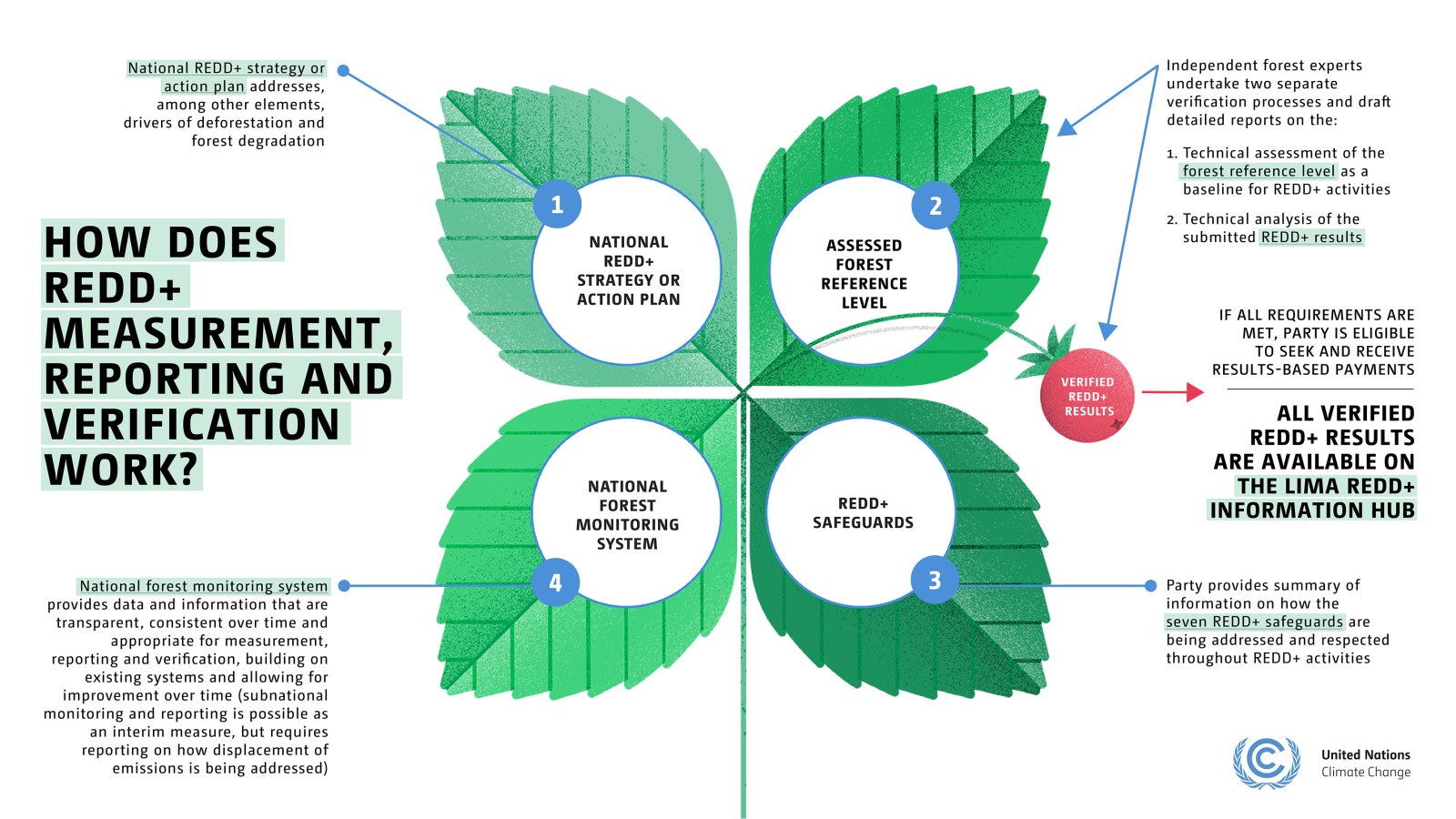Countries that provided submissions on this topic
-
Argentina
-
Belize
-
Bhutan
-
Brazil
Technical annex on REDD+ results to Brazil first BUR (submitted on 31 Dec 2014)
Technical annex on REDD+ results to Brazil second BUR (submitted on 3 Mar 2017)
Technical annex on REDD+ results to Brazil third BUR (Amazon biome) (submitted on 2 Mar 2019)
Technical annex on REDD+ results to Brazil third BUR (Cerrado biome) (submitted on 2 Mar 2019)
Technical annex on REDD+ results to Brazil fourth BUR (Amazon biome) (submitted on 31 Dec 2020)
Technical annex on REDD+ results to Brazil fourth BUR (Cerrado biome) (submitted on 31 Dec 2020)
-
Cambodia
-
Chile
-
Colombia
Technical annex on REDD+ results to Colombia first BUR (submitted on 11 Dec 2015)
Technical annex on REDD+ results to Colombia first BUR (modified) (submitted on 18 Oct 2016)
Technical annex on REDD+ results to Colombia second BUR (submitted on 28 Dec 2018)
Technical annex on REDD+ results to Colombia first BTR (submitted on 8 Sep 2025)
-
Costa Rica
-
Democratic Republic of the Congo
-
Ecuador
-
Gabon
Technical annex on REDD+ results to Gabon first BUR - French (submitted on 29 Dec 2021)
Technical annex on REDD+ results to Gabon first BUR - French (modified) (submitted on 22 Jul 2022)
Technical annex on REDD+ results to Gabon first BUR - English (submitted on 29 Dec 2021)
Technical annex on REDD+ results to Gabon first BUR - English (modified) (submitted on 15 Jun 2022)
-
Guyana
-
Honduras
Technical annex on REDD+ results to Honduras first BUR (submitted on 19 Nov 2020)
Technical annex on REDD+ results to Honduras first BUR (modified) (submitted on 27 May 2021)
Technical annex on REDD+ results to Honduras second BUR (submitted on 22 Mar 2024)
Technical annex on REDD+ results to Honduras second BUR (modified) (submitted on 11 Sep 2024)
-
Indonesia
-
Lao PDR
-
Malaysia
-
Mexico
-
Mozambique
-
Panama
-
Papua New Guinea
-
Paraguay
-
Suriname
Technical annex on REDD+ results to Suriname first BUR (submitted on 5 Nov 2022)
Technical annex on REDD+ results to Suriname first BUR (modified) (submitted on 24 Aug 2023)
Technical annex on REDD+ results to Suriname first BUR (submitted on 5 Nov 2022)
Technical annex on REDD+ results to Suriname first BUR (modified) (submitted on 24 Aug 2023)
-
Uganda
-
Viet Nam

